
Safe driving in fog can be a challenge for even the most experienced drivers. Reduced visibility and slippery road conditions can make it difficult to navigate safely on the road. That’s why it’s crucial to know how to drive with confidence and safety in foggy conditions. In this article, we will provide essential tips to help you navigate through foggy conditions and arrive at your destination safely.
To mitigate the risks associated with driving in fog, it’s essential for drivers to adjust their driving behavior. This includes reducing speed, using low-beam headlights, maintaining a greater following distance, and being prepared for sudden stops. It’s also advisable to avoid driving in fog unless absolutely necessary.
First and foremost, it’s important to check your visibility before you even start your journey. Turn on your headlights and fog lights to ensure that other drivers can see you on the road. Maintaining a safe distance from the vehicle in front of you is also essential, as it gives you ample time to react to any sudden stops or obstacles that may appear.
Foggy conditions can create a range of challenges for drivers, including reduced visibility, slippery roads, and limited reaction time. By adopting the right techniques and precautions, you can minimize the risks and ensure a safe journey. Firstly, make sure your vehicle is prepared for foggy conditions. Check your headlights, taillights, and fog lights to ensure they are in proper working order. Additionally, keep your windshield clean and free from any dirt or debris.
Additionally, driving at a slower speed can significantly reduce your risk of accidents in foggy conditions. By driving at a speed appropriate for the conditions, you allow yourself more time to react to any potential hazards that might arise. Finally, always be attentive and avoid distractions while driving in fog.
With these essential tips, you can confidently navigate through foggy conditions and ensure your safety on the road. So buckle up, turn on those headlights, and drive with confidence even in challenging weather conditions.

What causes fog and why is it dangerous?
Fog forms when water vapor in the air near the Earth’s surface condenses into tiny floating droplets, creating a thick cloud at ground level. This can happen when the air becomes supersaturated, meaning it can no longer hold moisture in vapor form, often due to rapid cooling or when warm air passes over a cold surface. Fog is particularly dangerous because it significantly reduces visibility, which can lead to accidents in various modes of transportation.
For instance, drivers may not be able to see upcoming obstacles or changes in the road, pilots might struggle with takeoff and landing, and mariners could find navigation challenging. Dense fog can reduce visibility to nearly zero, making it one of the most hazardous weather conditions for travel.
How does fog affect a driver’s vision?
Fog is a weather condition that can significantly impact road safety by affecting a driver’s vision. When fog sets in, it scatters and refracts light, reducing visibility and making it difficult for drivers to see the road ahead, traffic signals, and other vehicles. The danger lies not only in the reduced visibility but also in the way fog can distort perception.
One of the primary ways fog affects drivers is by diminishing depth perception. Depth perception is crucial for understanding the distance between objects, and in foggy conditions, the ability to judge the distance to the car ahead or to an oncoming vehicle is compromised. This can lead to misjudgments in speed and distance, increasing the risk of collisions.
Additionally, fog creates a low-contrast environment, making it hard to distinguish between light and dark areas. This can cause drivers to miss important visual cues, such as the edges of the road, lane markings, or obstacles. The Mandelbaum Effect further complicates matters by causing vision to fixate on a closer point, typically around three feet away, instead of the normal viewing distance. This natural reaction to weakened visibility means that drivers may not see hazards until it’s too late to react appropriately.
Driving in fog is often compared to driving with a misted or dirty windshield, where the contrast and clarity of the view are uniformly reduced. However, real fog conditions are more complex, with varying degrees of contrast reduction depending on the distance from the observer. This gradient of visibility means that objects further away will appear more obscured than those closer to the driver, adding another layer of difficulty to navigating the roads safely.
Mandelbaum Effect
The Mandelbaum Effect is a visual phenomenon that occurs when visibility is compromised, such as in foggy or rainy conditions, causing the eye to focus on a nearer point than intended. This effect, first described by J. Mandelbaum in 1960, can have significant implications for safety, particularly for pilots and drivers, as it may lead to a failure to detect obstacles or hazards at a distance.
The natural tendency of the eye to relax and focus on a ‘dark focus’ or ’empty field’—usually less than a meter away—can be exacerbated by nearby objects or dirty glass, drawing the focus even closer and potentially contributing to accidents. Understanding and compensating for the Mandelbaum Effect remains an area of ongoing research, particularly in fields where clear vision is critical for safety.
Understanding fog and its impact on driving
Fog is a weather condition that occurs when tiny water droplets suspend in the air, creating a dense cloud-like formation near the ground. This reduces visibility, making it challenging for drivers to see other vehicles, road signs, and obstacles ahead. Fog can also cause the road surface to become wet and slippery, increasing the risk of accidents.
When driving in foggy conditions, it’s important to understand the impact it has on your ability to drive safely. The reduced visibility and limited reaction time require drivers to adopt specific techniques and precautions to minimize the risks and ensure a safe journey.
The dangers of driving in foggy conditions
Driving in foggy conditions comes with its own set of dangers. The reduced visibility makes it difficult to judge the distance between vehicles and react to sudden stops or obstacles. Additionally, the slippery road surface increases the risk of losing control of the vehicle. These factors combined can lead to accidents, injuries, and even fatalities.
To stay safe while driving in fog, it’s crucial to be aware of these dangers and take appropriate measures to mitigate the risks involved.
Tips for preparing your vehicle for driving in fog
Before hitting the road in foggy conditions, it’s important to ensure that your vehicle is prepared to handle the challenges ahead. Start by checking your headlights, taillights, and fog lights to ensure they are in proper working order. Properly functioning lights are essential to improve your visibility to other drivers and make your vehicle more visible.
In addition to checking your lights, it’s important to keep your windshield clean and free from any dirt or debris. A dirty windshield can further hinder your visibility in foggy conditions, making it even harder to see the road ahead. Make sure your windshield wipers are in good condition and replace them if necessary.
Lastly, check your tires to ensure they have adequate tread depth. Good tire traction is crucial in slippery conditions, as it allows your vehicle to maintain better control and reduce the risk of skidding or sliding.
Essential safety precautions when driving in fog
When driving in foggy conditions, taking essential safety precautions can significantly reduce the risks involved. Here are some important tips to keep in mind:
- Reduce your speed: Driving at a slower speed than usual is crucial in foggy conditions. By doing so, you allow yourself more time to react to potential hazards that might arise. Maintain a speed appropriate for the visibility and road conditions, and always stay within the legal speed limits.
- Use your headlights and fog lights effectively: Turn on your headlights and fog lights to improve your visibility and make your vehicle more visible to others. Use low beams rather than high beams, as high beams can reflect off the fog and impair your vision further.
- Maintain a safe distance: Increase the following distance between your vehicle and the one in front of you. This gives you ample time to react to any sudden stops or obstacles that may appear. Keep in mind that in foggy conditions, it may be more challenging to judge the distance between vehicles accurately.
- Avoid distractions: Driving in fog requires your full attention. Avoid any distractions that may take your focus away from the road, such as using your mobile phone or adjusting the radio. Stay alert and focused on the task at hand – arriving safely at your destination.
Additional precautions for long-distance driving in fog
- Pull Over if Needed: In extremely dense fog, it’s safer to pull over in a safe location until visibility improves.
- Listen for Traffic: Sometimes visibility is so poor that you may need to rely on your hearing to be aware of other vehicles.
- Stay Informed: Before you set out, check weather reports for fog warnings or advisories.
- Avoid Distractions: Keep your focus on the road and avoid activities that could divert your attention, like using a cell phone.
- Use Fog Lights: If your vehicle is equipped with fog lights, use them to improve visibility.
- Use Low-Beam Headlights: High-beams can reflect off the fog and impair visibility, so stick to low-beam lights.
- Defrost and Demist: Ensure your windshield is clear by using the defrost function to prevent condensation.
Using headlights and fog lights effectively
First and foremost, it’s important to check your visibility before you even start your journey. Turn on your headlights and fog lights to ensure that other drivers can see you on the road. Maintaining a safe distance from the vehicle in front of you is also essential, as it gives you ample time to react to any sudden stops or obstacles that may appear.
In foggy conditions, visibility is significantly reduced, and your headlights play a crucial role in allowing you to see the road ahead. Ensure that your headlights are in proper working order and aligned correctly. Use low beam headlights as they provide better visibility in fog compared to high beam headlights which can reflect light back towards you, further reducing visibility. If your vehicle is equipped with fog lights, turn them on as well. Fog lights are designed to emit light at a lower angle, reducing glare and improving visibility in foggy conditions.
Remember to keep your headlights and fog lights clean and free from dirt or debris. Wipe them regularly to ensure maximum visibility. Additionally, avoid using your hazard lights while driving in fog, as they can be confusing to other drivers and may not provide the necessary visibility.
Maintaining a safe distance and speed in foggy conditions
Foggy conditions can create a range of challenges for drivers, including reduced visibility, slippery roads, and limited reaction time. By adopting the right techniques and precautions, you can minimize the risks and ensure a safe journey. Firstly, make sure your vehicle is prepared for foggy conditions. Check your headlights, taillights, and fog lights to ensure they are in proper working order. Additionally, keep your windshield clean and free from any dirt or debris.
When driving in fog, it is crucial to maintain a safe distance from the vehicle in front of you. Reduced visibility means that you have less time to react to sudden stops or obstacles. Allow for a larger following distance than you would in normal conditions. A good rule of thumb is to maintain a distance of at least three seconds from the vehicle ahead. To calculate this, pick a stationary object on the side of the road and start counting when the vehicle in front of you passes it. If you reach the object before you finish counting to three, you are following too closely.
Driving at a slower speed can significantly reduce your risk of accidents in foggy conditions. By driving at a speed appropriate for the conditions, you allow yourself more time to react to any potential hazards that might arise. Remember that it’s better to arrive at your destination a little later than to risk your safety by driving too fast in fog. Always adhere to the posted speed limits and adjust your speed accordingly based on the visibility and road conditions.
Navigating intersections and traffic in fog
Intersections can be particularly challenging to navigate in foggy conditions. The reduced visibility makes it difficult to see oncoming traffic and pedestrians. Approach intersections with caution and reduce your speed even further. Look for any signs or signals that indicate the right of way and proceed only when it is safe to do so. If you are unsure about the traffic situation, it’s best to wait until you have a clear view before proceeding.
When it comes to traffic in fog, it’s important to remain patient and calm. Avoid sudden lane changes or aggressive maneuvers, as other drivers may not be able to see you in time to react. Use your turn signals well in advance to indicate your intentions and allow other drivers to adjust their driving accordingly. Be aware of any emergency vehicles on the road and give them plenty of space to pass.
Common mistakes to avoid when driving in fog
When driving in fog, it’s crucial to be aware of common mistakes to ensure your safety and the safety of others on the road. Here are some key points to remember:
- Avoid Using High Beams: High beams can reflect off the fog and create a ‘white wall’ effect, reducing visibility even further.
- Reduce Your Speed: Slowing down is essential as fog can significantly decrease your visibility and reaction time to any obstacles.
- Keep the Music Down: Loud music can be a distraction and may drown out important audio cues, such as the sound of other vehicles or emergency signals.
- Drive Predictably: Use signals well in advance and avoid sudden moves to help other drivers anticipate your actions and react accordingly.
- Maintain a Safe Distance: Increase the following distance between you and the vehicle ahead to allow more time for stopping if needed.
- Use Fog Lights If Available: If your vehicle is equipped with fog lights, use them instead of your regular headlights to improve visibility close to the ground.
- Follow Road Lines: Use the painted road lines as a guide to help maintain your lane position when visibility is poor.
- Avoid Distractions: Stay focused on the road and avoid activities that could take your attention away, like using your phone or adjusting the radio.
- Consider Pulling Over: If the fog becomes too dense to drive safely, find a safe place to pull over and wait until conditions improve.
Remember, fog can be unpredictable, and visibility can deteriorate quickly, so it’s important to stay alert and cautious at all times. If you’re unsure about driving in foggy conditions, it’s better to postpone your trip until the fog clears up. Safety should always be your top priority.
How to handle emergencies and unexpected situations in fog
Even with the best precautions, emergencies and unexpected situations can still occur while driving in fog. The key is to remain calm and take the necessary steps to ensure your safety. If you find yourself in a situation where you cannot see the road ahead or are unsure of your surroundings, it’s best to pull over to a safe location and wait for the fog to clear. Use your hazard lights to make yourself more visible to other drivers.
In case of an accident or breakdown, it’s important to have an emergency kit in your vehicle. This kit should include items such as a flashlight, first aid supplies, a reflective vest, and flares or reflective triangles to warn other drivers of your presence. If possible, move your vehicle off the road to a safe location and call for assistance. Avoid standing or walking on the road, as other drivers may not be able to see you in the fog.
Vapor in the Fog Impacts Breathing Adversely
Fog, a meteorological phenomenon characterized by low visibility due to the suspension of water droplets in the air, can indeed have an impact on breathing, particularly for individuals with pre-existing respiratory conditions such as asthma. The presence of fog can exacerbate respiratory issues by introducing cold, moist air into the lungs, which may lead to discomfort, coughing, and irritation.
Moreover, certain types of fog, especially those that are artificially created using glycol-based fluids in entertainment venues, can cause adverse effects on respiratory health. It is important for individuals with asthma or other respiratory sensitivities to be cautious in foggy conditions and to take preventative measures such as using a bronchodilator inhaler as advised by a healthcare professional. Additionally, staying informed about the composition of fog, especially in controlled environments like concerts or theaters, can help individuals make better decisions regarding their exposure and manage their respiratory health effectively.
You Could be Choking or Your Eyes Might Suffer Due To Fog
Exposure to fog, especially when it contains pollutants, can have various health implications. Fog can act as a carrier for dust, smoke, and other particulate matter that can irritate the respiratory system, leading to difficulty in breathing, coughing, and potentially exacerbating conditions like asthma and bronchitis. The fine particles in fog can also irritate the eyes, causing discomfort, redness, and a burning sensation.
In some cases, foggers, which are often used to disperse pesticides, can cause serious health issues such as nose and throat irritation, headaches, dizziness, vomiting, and even allergic reactions. It’s important to take precautions when there is heavy fog, such as wearing protective eyewear and masks, and ensuring good indoor air quality to minimize the adverse effects on health.
What to do if you get lost or disoriented in fog?
If you find yourself lost or disoriented in fog, here are some steps you can take to ensure your safety:
- Stay Calm: Panic can increase the risk of making poor decisions. Take deep breaths and try to remain calm.
- Stop Moving: If visibility is severely limited, it’s safer to stay put to avoid potential hazards you can’t see.
- Find a Safe Spot: If you’re in an area with traffic, find a place away from the road where you can wait safely.
- Use Sound: If you’re in a wilderness area, use a whistle or make noise to help rescuers locate you.
- Stay Warm: Fog can be accompanied by cold weather, so keep as warm as possible to prevent hypothermia.
- Use a Compass or GPS: If you have them, use these tools to help orient yourself.
- Follow Known Routes: If you’re familiar with the area, try to follow paths or roads that are well known to you.
- Signal for Help: Use a flashlight or your phone’s light to signal for help if you hear people or traffic nearby.
- Call for Help: If you have a cell phone with service, call local authorities for assistance.
- Wait for the Fog to Lift: Often, the best course of action is to wait for the fog to clear to improve visibility.
Remember, it’s essential to prepare for such situations by having appropriate gear with you, like a compass, warm clothing, and a means to call for help. Always let someone know your plans and expected return time when venturing out into areas where you might encounter fog. Safety should always be your top priority.
Additional resources for safe driving in fog
If you want to further enhance your knowledge and skills for safe driving in foggy conditions, there are plenty of resources available. Online driving courses and tutorials can provide valuable insights and tips for driving in challenging weather conditions. Additionally, local driving schools or automotive organizations may offer workshops or seminars specifically focused on safe driving in fog. Take advantage of these resources to improve your driving skills and ensure your safety on the road.
Conclusion: Stay safe and confident on the road in foggy conditions
Driving in fog requires extra caution and attention to ensure your safety and the safety of others on the road. By following these essential tips, you can confidently navigate through foggy conditions and arrive at your destination safely. Remember to use your headlights and fog lights effectively, maintain a safe distance and speed, navigate intersections and traffic with care, and know how to handle emergencies in fog. With these precautions in mind, you can drive with confidence even in challenging weather conditions. So buckle up, turn on those headlights, and drive with confidence and safety in foggy conditions.
By implementing these tips and staying alert, you can minimize the risks associated with driving in foggy conditions. Stay safe and confident on the road, no matter the weather.
References:
Adams CW, Johnson CA. Steady-state and dynamic response properties of the Mandelbaum effect. Vision Res. 1991;31(4):751-60. doi: 10.1016/0042-6989(91)90013-u. PMID: 1843774.
Your one click can make a difference
Keep sharing and promoting health and safety awareness!
Related posts:
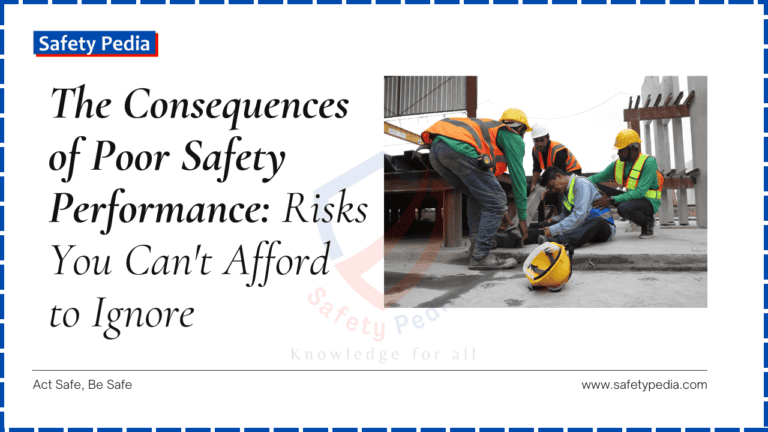
The Consequences of Poor Safety Performance: Risks You Can’t Afford to Ignore
Discover the potential consequences of poor safety performance in the workplace and how they can negatively impact both employees and the company as a whole.
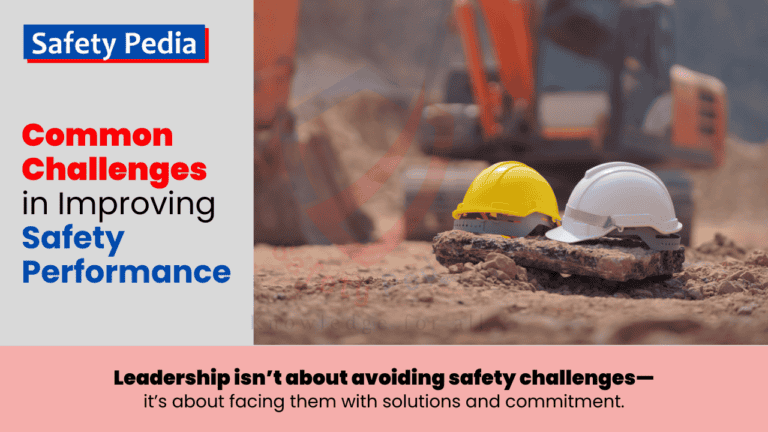
18 Common Challenges in Improving Safety Performance at Work
Discover 18 common challenges in improving safety performance at work. Learn how to overcome these obstacles for a safer workplace.
20 Best Ways to Improve Safety Performance in the Workplace
Discover the 20 best ways to improve safety performance at workplace, including actionable strategies for hazard prevention, employee engagement, safety training, and cultivating a culture of well-being.
Join Our Safety Community!
Stay informed with the latest tips and insights on occupational health, safety, and the environment.
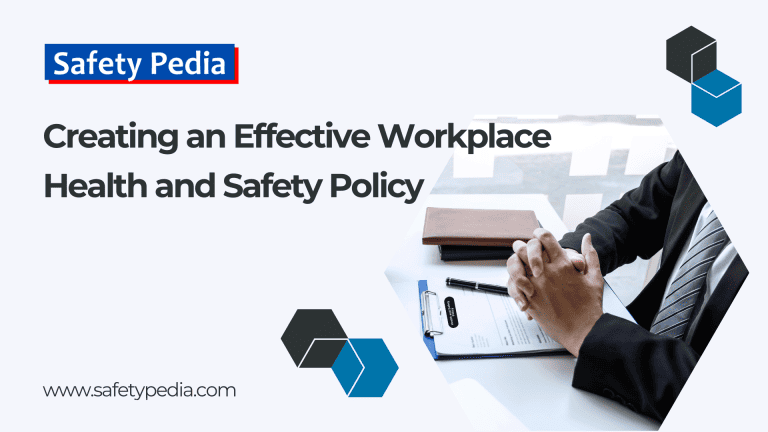



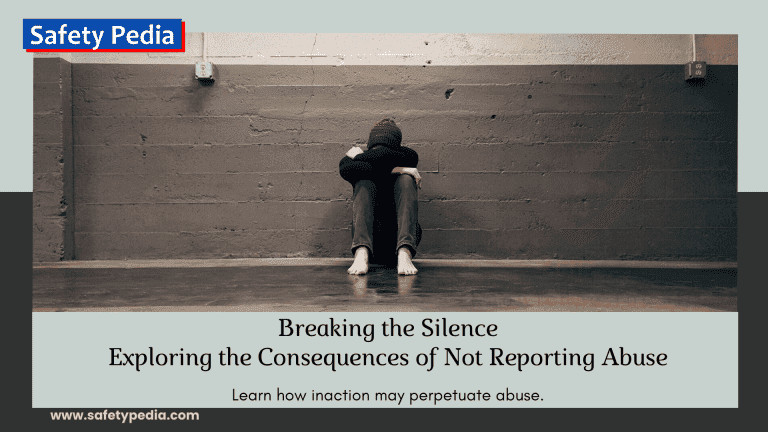
this article is very useful, thank you for making a good article
We appreciate your positive feedback! It’s great to hear you’re finding the content helpful.
Thank you for sharing such valuable knowledge! This is an excellent site, and I truly appreciate the great content. Your insights and expertise are remarkable, and it’s great to see you sharing them with others. Please continue to support us by recommending the best driving licence in Rainham by Boss Driving.
Thank you for your feedback! We’re happy you’re enjoying the site. To maintain a focus on informative content, we generally avoid specific commercial endorsements in the comments section. We encourage you to share your positive experiences with Boss Driving on dedicated review platforms.